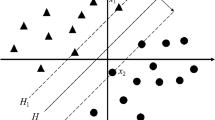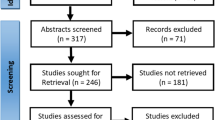Abstract
Chronic Obstructive Pulmonary Disease (COPD) is a chronic lung disease that causes a progressive decline in respiratory function. COPD has become the fourth most lethal disease in the world, and worldwide deaths continue to become more common as a result of COPD. Therefore, it is important to help doctors diagnose COPD more accurately using big data analytics and effective algorithms. In the past, COPD was mainly studied as follows: applying data to determine the impact of a single feature on the disease, such as the effect of FEV1/FVC (forced expiratory volume in the first second/forced vital capacity), and analyzing a case with simple models, such as logistic regression or a support vector machine. Therefore, there are obviously deficiencies in previous studies. First, the impacts of multi-dimensional features on COPD have not been considered comprehensively. Second, there is no fusion of multiple study methods on the diagnosis and prognosis of COPD. Thus, this paper presents a feature-maximum-dependency-based fusion diagnosis method for COPD. First, the MDF-RS (feature maximum dependency-rough set) algorithm is proposed to extract the optimal combination of multi-dimensional features. Second, the integrated model DSA-SVM (direct search simulated annealing-support vector machine) is presented to classify the disease. Finally, the proposed method is experimentally tested. The results show that the algorithms outperform other classic methods.




Similar content being viewed by others
References
Ali MM, Törn A, Viitanen S (2002) A direct search variant of the simulated annealing algorithm for optimization involving continuous variables. Comput Oper Res 29(1):87–102
Bleeker SE, Moll HA, Steyerberg EW (2013) External validation is necessary in prediction research: a clinical example. J Clin Epidemiol 56(9):826–832
Celik MU, Sharma G, Tekalp AM (2006) Lossless watermarking for image authentication: a new framework and an implementation. IEEE Transactions on Image Processing 15(4):1042–1049
Chen Y, Miao D, Wang R (2017) A rough set approach to feature selection based on ant colony optimization. Pattern Recogn Lett 31(3):226–233
Cheung N (2017) Machine learning techniques for medical analysis. N Engl J Med 26(4):126–132
Cui JS, Liu Y, Xu YD (2013) Tracking generic human motion via fusion of low- and high-dimensional approaches. IEEE Trans Syst Man Cybern Syst Hum 43(4):996–1002
Du ZL, Li XM, Xi LP (2015) Multi-class probabilistic extreme learning machine and its application in remaining useful life prediction. J Syst Eng Electron 37(12):2777–2784
Gao C, Liu J, Feng Q (2016) People-flow counting in complex environments by combining depth and color information. Multimed Tools Appl 75(15):9315–9331
Guo HM, Du J, Huang LF (2017) Application of ARIMA model based on R language in predicting incidence of patients with acute exacerbation of chronic obstructive pulmonary disease. Chinese Journal of Health Statistics 34(2):288–289
Himes BE, Dai Y, Kohane IS, Weiss ST, Ramoni MF (2009) Prediction of chronic obstructive pulmonary disease (copd) in asthma patients using electronic medical records. J Am Med Inform Assoc 16(3):371–379
Hoogendoorn M, Feenstra TL, Boland M, Briggs AH, Borg S, Jansson SA (2017) Prediction models for exacerbations in different copd patient populations: comparing results of five large data sources. Int J Chron Obstruct Pulmon Dis 12(12):3183–3194
Kaneiwa K (2011) A rough set approach to multiple dataset analysis. 11(3):204–215. Elsevier Science Publishers
Kaya Y, Uyar M (2013) A hybrid decision support system based on rough set and extreme learning machine for diagnosis of hepatitis disease. Appl Soft Comput 13(8):3429–3438
Li CQ, Tao YX (2017) Application of support vector machine with simulated annealing algorithm in mbr membrane pollution prediction. In: IEEE International Conference on Software Engineering Research, Management and Applications 34(5):211–217
Liu Y, Liang Y, Liu S (2016) Predicting urban water quality with ubiquitous data. J Clin Epidemiol 13(2):112–124
Liu Y, Zheng Y, Liang S (2016) Urban water quality pre diction based on multi-task multi-view learning. Proceedings of the 25th International Joint Conference on Artificial Intelligence 3(4):251–265
Liu Y, Nie L, Rosenblum DS (2016) From action to activity: sensor based activity recognition. Neurocomputing 181(2):108–115
Lópezcampos JL, Tan W, Soriano JB (2016) Global burden of COPD. Respirology 21(1):14–23
Mega JL, Braunwald E, Wiviott SD et al (2012) Rivaroxaban in patients with a recent acute coronary syndrome. N Engl J Med 336(1):19–31
Moons K, Royston P, Vergouwe Y (2009) Prognosis and prognostic research: what, why, and how. BMJ 338(7):375–382
Moons K, Kengne A, Grobbee D (2013) Risk prediction models: II. External validation, model updating, and impact assessment. Heart 98(9):691–702
Rui L, Hong W, Xiaomei Y (2018) Shared-nearest-neighbor-based clustering by fast search and find of density peaks. Inf Sci 450(6):200–226
Sartakhti JS, Zangooei MH, Mozafari K (2012) Hepatitis disease diagnosis using a novel hybrid method based on support vector machine and simulated annealing (SVM-SA). Comput Methods Prog Biomed 108(2):570–582
Steyerberg EW (2011) Clinical prediction models. Acta Anaesthesiol Scand 39(105):134–135
Steyerberg EW, Moons K, Windt D (2013) Prognosis research strategy (PROGRESS): prognostic model research. PLoS Med 10(2):1001–1010
Thangavel K, Pethalakshmi A (2009) Dimensionality reduction based on rough set theory: a review. Appl Soft Comput 9(1):1–12
Zhang YP, Gao WC, Zhang B (2017) SA algorithm based integrated fault detection method for insulated track circuits. Railw J 39(4):68–72
Acknowledgements
The work is partially supported by the National Natural Science Foundation of China (Nos. 61672329, 61373149, 61472233, 61572300, 81273704), Shandong Province Science and Technology Plan Supported Project (No. 2014GGX101026) and Taishan Scholar Fund of Shandong Province (No. TSHW201502038, 20110819). We also gratefully acknowledge the support of NVIDIA Corporation with the donation of the TITAN X GPU used for this research.
Author information
Authors and Affiliations
Corresponding author
Additional information
Publisher’s Note
Springer Nature remains neutral with regard to jurisdictional claims in published maps and institutional affiliations.
Rights and permissions
About this article
Cite this article
Fang, Y., Wang, H., Wang, L. et al. Feature-maximum-dependency-based fusion diagnosis method for COPD. Multimed Tools Appl 79, 15191–15208 (2020). https://doi.org/10.1007/s11042-018-6876-6
Received:
Revised:
Accepted:
Published:
Issue Date:
DOI: https://doi.org/10.1007/s11042-018-6876-6




